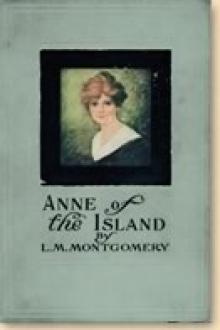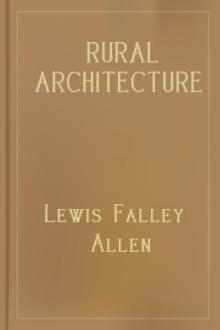A History of Art for Beginners and Students, Clara Erskine Clement Waters [best beach reads .txt] 📗

- Author: Clara Erskine Clement Waters
- Performer: -
Book online «A History of Art for Beginners and Students, Clara Erskine Clement Waters [best beach reads .txt] 📗». Author Clara Erskine Clement Waters
Edwin Landseer now worked on diligently and quietly; his works were constantly praised, and he received all the patronage that he desired. Through the advice of his master, Haydon, he had the habit of dissecting animals, and learning their anatomy with all the exactness with which other artists study that of human beings. About 1820 a lion died in the Exeter Change Menagerie, and Edwin Landseer secured the body for dissection. He then painted three large pictures of lions, and during the year in which he became eighteen years old, he exhibited these pictures and others of horses, dogs, donkeys, deer, goats, wolves, and vultures.
When nineteen, in 1821, he painted “Pointers, To-ho!” a hunting scene, which was sold in 1872, the year before his death, for two thousand and sixteen pounds. In 1822 Landseer gained the prize of the British Institution, one hundred and fifty pounds, by his picture of “The Larder Invaded.” He made the first sketch for this on a child’s slate, which is still preserved as a treasure. But the most famous of this master’s early works is the “Cat’s Paw,” in which a monkey uses a cat’s paw to draw chestnuts from a hot stove. Landseer was paid one hundred pounds; its present value is three thousand pounds, and it is kept at the seat of the Earl of Essex, Cashiobury.
This picture of the “Cat’s Paw” had an important result for the young artist, as it happened that it was exhibited when Sir Walter Scott was in London, and he was so much pleased with it that he made Landseer’s acquaintance, and invited him to visit Abbotsford. Accordingly, in 1824, Landseer visited Sir Walter in company with Leslie, who then painted a portrait of the great novelist, which now belongs to the Ticknor family of Boston. It was at this time that Sir Walter wrote in his journal: “Landseer’s dogs were the most magnificent things I ever saw, leaping, and bounding, and grinning all over the canvas.” Out of this visit came a picture called “A Scene at Abbotsford,” in which the dog Maida, so loved by Scott, was the prominent figure; six weeks after it was finished the dog died.
At this time Sir Walter was not known as the author of the “Waverley Novels,” but in later years Landseer painted a picture which he called “Extract from a Journal whilst at Abbotsford,” to which the following was attached: “Found the great poet in his study, laughing at a collie dog playing with Maida, his favorite old greyhound, given him by Glengarry, and quoting Shakespeare—‘Crabbed old age and youth cannot agree.’ On the floor was the cover of a proof-sheet, sent for correction by Constable, of the novel then in progress. N. B.—This took place before he was the acknowledged author of the ‘Waverley Novels.’” Landseer early suspected Scott of the authorship of the novels, and without doubt he came to this conclusion from what he saw at Abbotsford.
Landseer repeated his visits to Scotland for many years, and saw all parts of that country at various seasons. From the time of his first visit there was a new feeling in his works—a breadth and power was in them which he gained from nature, and a refinement and elevation which he undoubtedly received from his friendship with Sir Walter and the impetus it gave him. He also became so interested in the Gaelic people that he painted good pictures of them. At first these men did not know what to make of a huntsman who would throw away his gun when fine game appeared, and draw out pencils and paper to make pictures of what others were so eager to shoot. This tendency made him a poor hunter; but he was intensely interested in the chase, and especially in deer-stalking. He insisted that deer had intelligence, and the question was whether the game or the hunter happened to have the superior mind. When in London the artist was a quiet, society gentleman; but each year he broke away from all city habits, and went to the Highlands, where he divided his days between the chase and painting portraits of his friends there with their children and pets, or putting frescoes on the walls of their houses.
Landseer continued to live in his father’s house long after he was a famous man. The senior artist conducted all business matters—sold pictures, and took the money for them as if his son was still a boy. At length, through the advice of a friend, Edwin Landseer removed to No. 1 St. John’s Wood Road, to which he gave the name of Maida Vale; he enlarged, and improved this home from time to time, and had no other for nearly fifty years.
In 1826 Landseer painted “Chevy Chase;” it was the only historical painting he ever did, and still remains at Woburn Abbey, where it originally went. The animals in the picture are excellent of course, but this sort of painting was not that in which Landseer showed his best. This year of 1826 was an important one to this master. He was twenty-four years old, and was immediately admitted an Associate of the Royal Academy. No one can be a candidate for this honor at a younger age, and very few others have attained it so early. Before he was thirty Landseer was a full member, and his diploma picture, “The Dead Warrior” is in the Royal Academy. But this year saw a great change in his pictures, as may be seen in that of “The Chief’s Return from Deer-stalking,” which he sent to the next exhibition. It was free, broad, and effective beyond any previous work, and this manner was his best. Many judges fix the year 1834 as the very prime in the art of Landseer, and one of the works of that year, called “Bolton Abbey in the Olden Time,” is very famous. It represents the vassals of the abbey bringing in their tributes of game, fish, and fruits, which the jolly, old monks gladly receive.
There is no question but that Landseer’s best pictures are of dogs, and we can but echo the words of Hamerton when he says: “The best commentators on Landseer, the best defenders of his genius, are the dogs themselves; and so long as there exist terriers, deer-hounds, blood-hounds, his fame will need little assistance from writers on art.”
Landseer had a long and happy intimacy with Queen Victoria and the royal family. He painted portraits of the various members of the queen’s household in all possible ways, with dogs and on horseback, in fancy dress and hunting costume—in short, these portraits are far too numerous to be mentioned in detail. Ever after 1835 Landseer was called upon to paint pictures of the pets of the royal family, and these works became very numerous. While he was thus favored as an artist he was also a friend of the queen and her immediate family; he was often summoned to play billiards with Prince Albert. The queen’s Journal of Life in the Highlands frequently mentions him, and we are sure that if we could read Landseer’s diary it would tell us many interesting things of the queen and her family. Naturally it followed that an artist thus favored by the queen would be patronized by the nobility, and it is true that much of Landseer’s time, both as an artist and as a gentleman of society, was passed in the company of people of the highest positions in Great Britain; and with the one exception of Sir Joshua Reynolds, no artist in England was ever visited by so many people of rank. His house was really a social centre, and no one felt above accepting his hasty invitations to his parties, which were almost always gotten up on an impulse and the guests invited at the last possible moment.
Among Landseer’s friends were Dickens and Thackeray, and Sydney Smith was very fond of the artist; and it is said that when the great wit was asked to sit to Landseer for his portrait, he replied in the words of the haughty Syrian: “Is thy servant a dog that he should do this thing?”
When at his best Landseer had a facility in drawing and painting that was marvellous. He could draw two entirely different objects at the same moment, his left hand being equally skilful with the right. He was seen to draw a horse’s head with one hand and a stag’s head with antlers at exactly the same time—and this at an evening party to prove that it could be done. He once sent to an exhibition a picture of rabbits under which he wrote, “Painted in three-quarters of an hour.” He painted a life-size picture of a fallow-deer in three hours, and it required no retouching. One of his comrades said: “Sir Edwin has a fine hand, a correct eye, refined perceptions, and can do almost anything but dance on the slack wire. He is a fine billiard player, plays at chess, sings when with his intimate friends, and has considerable humor.”
We have passed over the best and most pleasant part of the life of this great painter, for in 1840 he had an attack of illness from which he never recovered. He travelled, and endeavored in every way to go on with his work; but he was always subject to attacks of depression which were sometimes so serious that his friends feared loss of reason. Of course there was a different tone in his works—a seriousness and pathos, and at times a religious element, which was very acceptable to some persons, and he gained admirers where he had not found them before. But it can scarcely be said that his last days were his best days, though he executed some famous pictures.
In 1866 he exhibited a model of a stag at bay which was afterward cast in bronze. The lions at the base of the Nelson monument in Trafalgar Square may be called the work of Sir Edwin, for he modelled one of the colossal beasts from which the others were formed with but slight changes, and the whole were cast under the care of Baron Marochetti.
In 1872 he painted “The Font,” which is a religious subject. It represents the sheep and lambs of the Gospel gathering round a font, upon the edge of which are doves. A rainbow spans the sky; on the sides of the font are a mask of the face of Christ and the symbols of the Atonement. This is a painful picture, for while it is exquisite in conception its execution shows the weakness of the painter, who so soon after he made it was released from all his darkness and suffering.
Sir Edwin Landseer was buried in St. Paul’s Cathedral with all the honors which his genius and character merited. His works are known to almost every child in America by means of the engravings which have been made from them. His brother Thomas engraved hundreds of the designs of Edwin and made them popular all over the world, and a large part of this success was due to the skill and sympathy which Thomas devoted to what was largely a work of love. Of course many other engravers have worked after Landseer, and almost all his pictures have been reproduced in one style of engraving or another.
There are nine portraits





Comments (0)